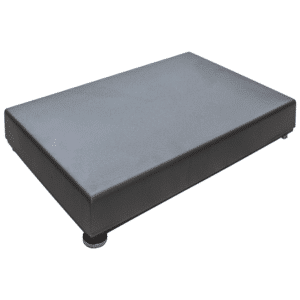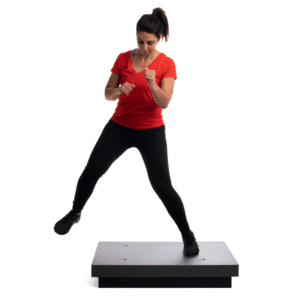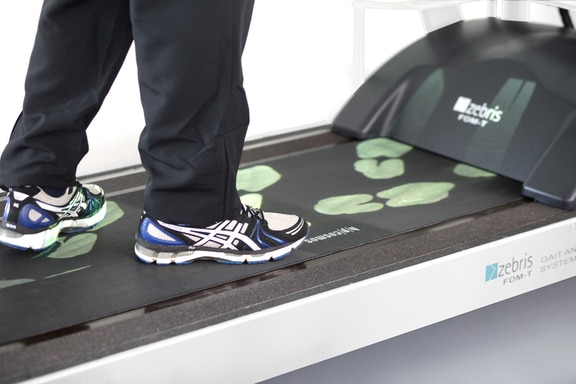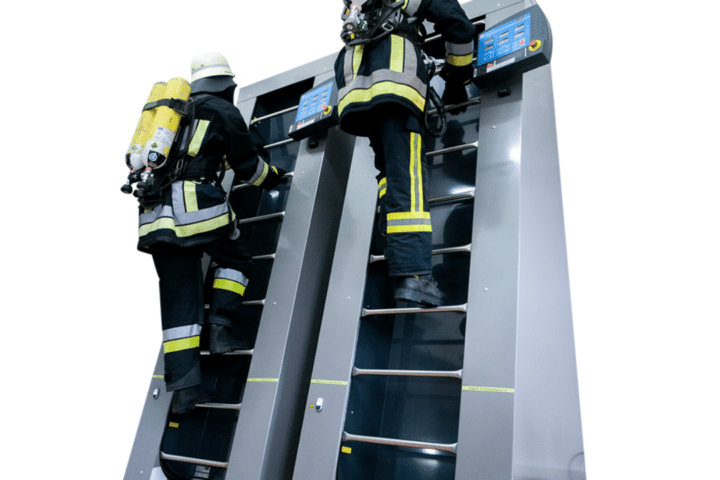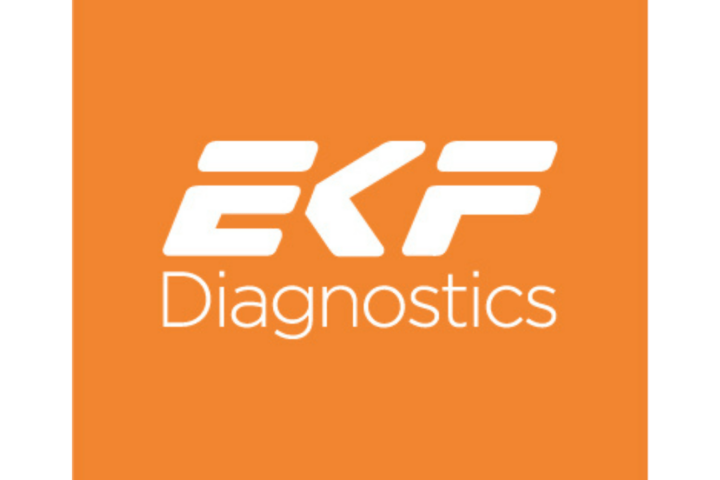In today’s world, understanding our movement is crucial for enhancing performance, recovering from injuries, and managing chronic conditions. While gait analysis is often associated with elite athletes, its benefits extend far beyond the sports field. From aiding diabetics to enhancing rehabilitation outcomes for stroke survivors, gait analysis is a valuable tool for a diverse range of individuals. Let’s explore how gait analysis can benefit everyone and highlight some of the top products distributed by HaB Direct that make this possible.
What is Gait Analysis?
Gait analysis is a comprehensive and systematic study of human movement using the whole body, usually focusing on the biomechanics of walking and running. It involves the detailed evaluation of the body’s motion, muscle activity, and ground reaction forces to provide valuable insights into an individual’s movement patterns.
Components of Gait Analysis
The analysis encompasses various components, including:
- Kinematics
- Kinetics
- Muscle activity
- Temporal-spatial parameters
Kinematics involves motion tracking, where motion capture systems (such as video cameras and markers placed on the body) track the movement of joints and limbs in three dimensions. It also includes analysing joint angles during different phases of the gait cycle, as well as measuring stride length and speed.

Kinetics focuses on force measurements using force plates to assess ground reaction forces, providing information on how forces are absorbed and generated during movement. Additionally, pressure distribution analyses the areas of high stress on the feet that may lead to injury.
Muscle activity is evaluated using electromyography (EMG) to record electrical activity in muscles, assessing muscle activation patterns and timing, along with muscle strength and coordination.
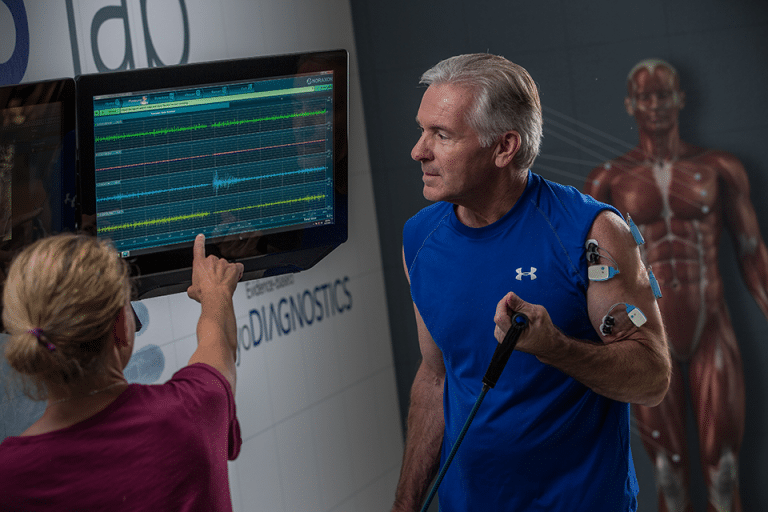
Temporal-spatial parameters include measuring cadence, the number of steps taken per minute, and analysing the stance and swing phases of the gait cycle.
The Phases of the Gait Cycle
The gait cycle is divided into two main phases: the stance phase and the swing phase. These phases are further divided into sub-phases that describe the specific events during walking and running.
The stance phase (which constitutes 60% of the gait cycle) involves the foot being in contact with the ground:
- Initial Contact (Heel strike): When the heel first contacts the ground.
- Loading Response (Foot Flat): The period when the entire foot comes into contact with the ground, absorbing the shock of initial contact.
- Midstance: The body’s weight is transferred over the supporting foot which is fully flat to the ground.
- Terminal Stance (Heel Off): The heel lifts off the ground as the body weight moves forward onto the forefoot.
- Pre-Swing (Toe-off): when the toes push off the ground, propelling the body forward.
The swing phase makes up about 40% of the gait cycle and involves the foot being off the ground. It includes the following sub-phases:
- Initial Swing: The foot lifts off the ground, and the leg accelerates forward.
- Mid Swing: The leg swings directly beneath the body, and the foot clears the ground.
- Terminal Swing: The leg decelerates as it prepares for initial contact with the ground again.

Each of these phases and subphases plays a critical role in ensuring a smooth and efficient walking pattern. Proper coordination and timing of these phases are essential for normal gait. Abnormalities in any of these phases can lead to gait disorders, which can be identified and analysed through gait analysis.
Who can benefit from Gait Analysis?
Gait analysis has a wide range of applications in various fields.
In clinical and rehabilitation settings, it is used for diagnosing gait abnormalities caused by:
- Neurological disorders, such as Parkinson’s disease, stroke, multiple sclerosis, cerebral palsy, and spinal cord injuries. Thus allowing for the improvement of mobility and functional walking.
- Musculoskeletal conditions like arthritis and limb-length discrepancies. It can assess the impact of these conditions on walking and develop appropriate treatment plans.
- Diabetic Neuropathy, addressing walking abnormalities that may lead to foot ulcers.
- Orthopaedic surgeries, particularly hip or knee replacements to ensure proper recovery and rehabilitation.
- Developmental Disorders, particularly in children with developmental delays or congenital abnormalities, to monitor and guide development and treatment.
- Patients with Prosthetics or Orthotics to ensure proper fitting and functionality of the devices, improving walking efficiency and comfort.
- Fall risks, especially within elderly patients, assess fall risk, improve balance, and develop strategies to maintain mobility and independence.
It also plays a crucial role in rehabilitation by allowing rehabilitation professionals to monitor the effectiveness of rehabilitation programmes and assisting in tailoring treatments to individual needs.
Sports Performance
In sports performance, gait analysis helps athletes optimise movement by analysing technique and suggesting modifications to enhance efficiency and reduce the risk of injury. It also identifies biomechanical factors that may predispose athletes to injuries, recommending corrective strategies for injury prevention.
Research and Development
In research and development, gait analysis informs the design of footwear, orthotics, and prosthetics, contributing to improved comfort, performance, and injury prevention. Additionally, it advances the understanding of human biomechanics and movement disorders through scientific research. Therefore assisting in research in biomechanics, physical therapy, and sports science, to study human movement and develop new techniques or equipment for improving gait and mobility.
Ergonomics
In ergonomics, gait analysis assesses workers’ movements to reduce the risk of injury and improve workplace safety. By understanding how different tasks affect gait, ergonomists can redesign jobs to minimise harmful movements. This may involve rotating tasks among workers, redesigning tools, or implementing breaks to reduce fatigue. For example, a 2014 study on Ergonomic Evaluation of upper limb movements in the automobile production measured by means of motion capturing (Hölzel, C.; Bengler, Klaus; Dressel, T.) demonstrated the application of motion capture technology in assessing and improving ergonomic practices.
This study compared two motion capture systems, Vicon Nexus and Noraxon MyoMotion, to evaluate body postures during assembly tasks. The findings highlighted the prevalence of high-risk postures, such as extended wrist angles and overhead work, which contributed to upper limb disorders. The results were used to recommend changes in workstation design and task procedures, such as lowering working heights and adjusting assembly positions, to reduce strain and improve worker safety. This study underscores the importance of using advanced technologies like motion capture for precise and effective ergonomic assessments.

The Technology Behind Gait Analysis
How It Works
Gait analysis involves a combination of technologies to assess movement patterns:
- Motion Capture Systems: Cameras track markers placed on the body to create a 3D model of movement.
- Force Plates: Measure ground reaction forces to evaluate balance and stability.
- Electromyography (EMG): Records muscle activity to assess neuromuscular function.
- Inertial Measurement Units (IMU): Use accelerometers and gyroscopes to track limb movement and orientation.
Benefits of Gait Analysis for Different Groups
Gait analysis offers numerous benefits, such as identifying movement disorders and providing a detailed understanding of gait abnormalities and their underlying causes. It enhances treatment plans by guiding the development of personalised treatment and rehabilitation programmes. For athletes, gait analysis provides insights into improving technique and preventing sports-related injuries. Additionally, it highlights potential risk factors and suggests interventions for injury prevention. Overall, gait analysis is a multidisciplinary approach that combines technology and biomechanics to assess and understand human movement, providing valuable information for clinical, sports, research, and ergonomic applications.
Athletes
Performance Enhancement:
For athletes, every millisecond counts. Gait analysis provides detailed insights into an athlete’s movement patterns, helping them optimise their technique and reduce the risk of injury. By identifying inefficiencies and asymmetries, athletes can make targeted improvements to enhance their performance.
Supporting studies
Athletic Performance Enhancement with Gait Analysis
- Article: Gait Retraining for Injured and Healthy Runners Using Augmented Feedback: A Systematic Literature Review
- Link: https://pubmed.ncbi.nlm.nih.gov/26158882/
- Summary: This review explores how gait analysis, combined with augmented feedback, can be used to enhance athletic performance and prevent injuries in both injured and healthy runners. It highlights the benefits of using advanced gait analysis technology to optimise running techniques and improve outcomes for athletes.
Assessing Lower Extremity Function
- Study: “The Impact of Real-Time Gait Analysis on Lower Extremity Function”
- Link: https://pubmed.ncbi.nlm.nih.gov/20584755/
- Summary: This study examined the impact of real-time gait retraining on hip kinematics, pain, and function in runners with patellofemoral pain syndrome (PFPS). Ten runners participated, receiving real-time feedback on hip adduction during treadmill running across eight sessions. Results showed significant improvements in hip mechanics, including reduced hip adduction and contralateral pelvic drop. Participants also experienced significant reductions in pain and enhancements in function, which were sustained at a one-month follow-up.
Rehabilitation Patients
Injury Recovery:
Gait analysis plays a crucial role in rehabilitation by tracking a patient’s progress and ensuring exercises are performed correctly. By monitoring changes in gait patterns, therapists can adjust treatment plans to accelerate recovery and prevent re-injury.
Supporting study
- Study: The Effects of Stroke and Stroke Gait Rehabilitation on Behavioural and Neurophysiological Outcomes: Challenges and Opportunities for Future Research
- Link: https://www.ncbi.nlm.nih.gov/pmc/articles/PMC10494801/#:~:text=Several%20gait%20training%20interventions%20have,survivors%20benefit%20from%20gait%20rehabilitation.&text=However%2C%20agreement%20in%20literature%20is,to%20maximize%20treatment%20rehabilitation%20efficacy.
- Summary: Examines the complexities of gait rehabilitation after stroke. It highlights the persistent gait impairments that affect functional mobility and quality of life for stroke survivors. Underscores the importance of advancing gait analysis and rehabilitation methods through innovative research to better address the complex challenges faced by stroke survivors.
Individuals with Chronic Conditions
Diabetes and Neuropathy:
For individuals with diabetes, maintaining proper foot health is vital to prevent complications such as neuropathy and ulcers. Gait analysis helps identify abnormalities in gait that may lead to increased pressure on certain areas of the feet, allowing for early intervention and prevention.
Supporting studies:
Study: A Closer Look at Gait Analysis in Patients with Diabetes
- Link: https://www.hmpgloballearningnetwork.com/site/podiatry/closer-look-gait-analysis-patients-diabetes#:~:text=If%20your%20patient%20with%20diabetes,stability%20and%20balance%20during%20ambulation.
- Summary: Highlights the importance of gait analysis in managing diabetic patients. Gait analysis can identify abnormalities caused by diabetic neuropathy, which increase the risk of foot ulcers and falls. Advances in technology, such as wearable sensors and pressure mapping systems, provide detailed insights into walking patterns. This allows healthcare providers to customise interventions, improve patient outcomes, and reduce the risk of complications associated with diabetes.
Study: Gait Analysis for Early Detection and Prediction of Diabetic Neuropathy in Patients With Diabetes: A Machine Learning Approach
- Link: https://www.ncbi.nlm.nih.gov/pmc/articles/PMC9336091/
- Summary: Explores the use of gait analysis combined with machine learning techniques to identify and predict diabetic neuropathy in patients with diabetes. The study highlights the potential of using gait analysis in conjunction with machine learning to enhance the early detection and prediction of diabetic neuropathy in diabetic patients. Gait analysis provides an innovative approach to monitoring and managing diabetes, particularly in identifying complications early on, which is crucial for effective treatment and improving patient outcomes.
Build your Gait Analysis lab
Bertec Force Plates
Bertec force plates are crucial instruments for measuring ground reaction forces, which are vital for understanding an athlete’s balance, coordination, and overall biomechanics. These plates accurately measure the forces exerted by the body on the ground during movement, providing precise data on how forces are distributed throughout different phases of the gait cycle.
- Fixed Force Plates: Installed in a lab setting, fixed force plates offer stable and consistent measurements of ground reaction forces. They are ideal for controlled testing environments where accurate data collection is essential for understanding complex movement patterns.
- Portable Force Plates: Designed for versatility, portable force plates can be easily integrated into various training environments, making them ideal for athletes seeking a competitive edge. These plates allow for real-world testing outside the lab, providing athletes and coaches with valuable insights into performance and technique improvements.
Noraxon Ultium EMG
The Noraxon Ultium EMG system is a state-of-the-art tool for measuring muscle activity. It provides detailed information about muscle activation patterns, offering insights into the coordination and timing of muscle contractions during movement.
- Applications in Rehabilitation: Rehabilitation professionals can use EMG data to identify muscle imbalances and dysfunctions. By understanding which muscles are underperforming or overactive, therapists can design targeted exercise programmes to strengthen weak areas, improve functional movement, and enhance overall muscular coordination.
- Sports Performance: In sports settings, the Noraxon Ultium EMG system helps athletes optimise muscle recruitment, allowing for more efficient movement patterns and reduced risk of injury. Coaches can use this data to fine-tune training regimens and maximise athletic performance.
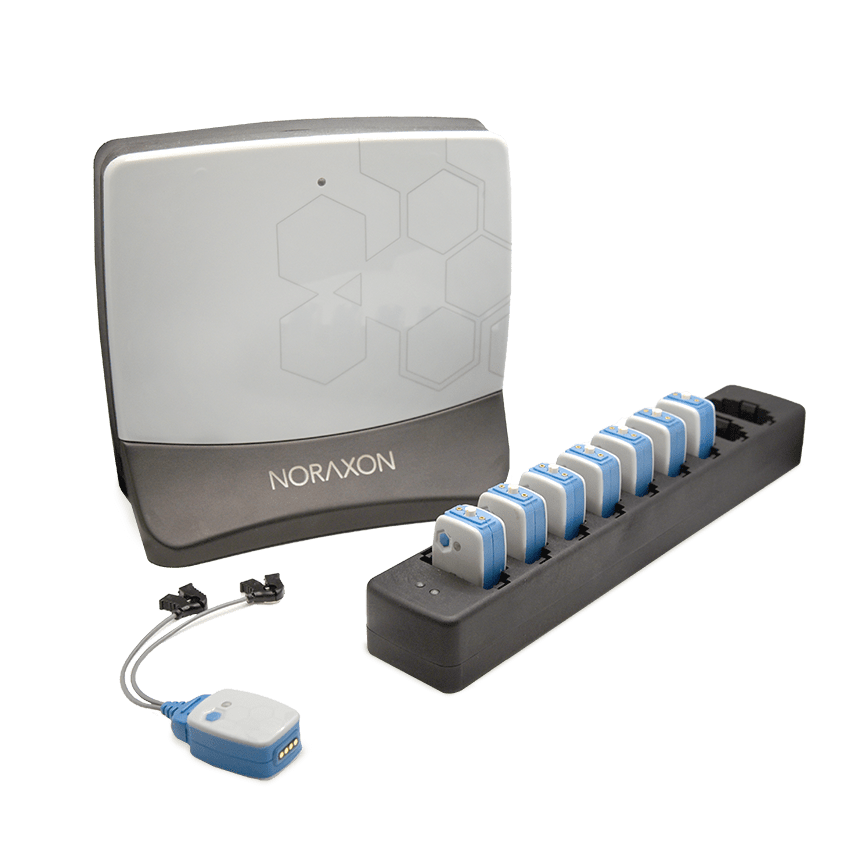
Noraxon Ultium Wireless Surface EMG
The Noraxon Ultium Wireless Surface EMG is a research-grade Wireless EMG system equipped with high sampling rate & resolution, low baseline noise, versatile SmartLead options, and powerful wireless communication.
Ultium Motion IMU
The Ultium Motion Inertial Measurement Unit (IMU) provides precise tracking of limb movement, offering detailed motion analysis that is essential for understanding joint kinematics and compensatory movements.
- Detailed Motion Analysis: The IMU system measures acceleration, rotation, and angular velocity of limbs, providing comprehensive data on joint angles and movement trajectories. This information is crucial for assessing how well joints are functioning during various activities.
- Rehabilitation and Injury Prevention: During rehabilitation exercises, the IMU can detect compensatory movements that may hinder recovery or lead to further injury. By identifying these movements, therapists can adjust rehabilitation strategies to ensure proper movement patterns and promote optimal recovery.
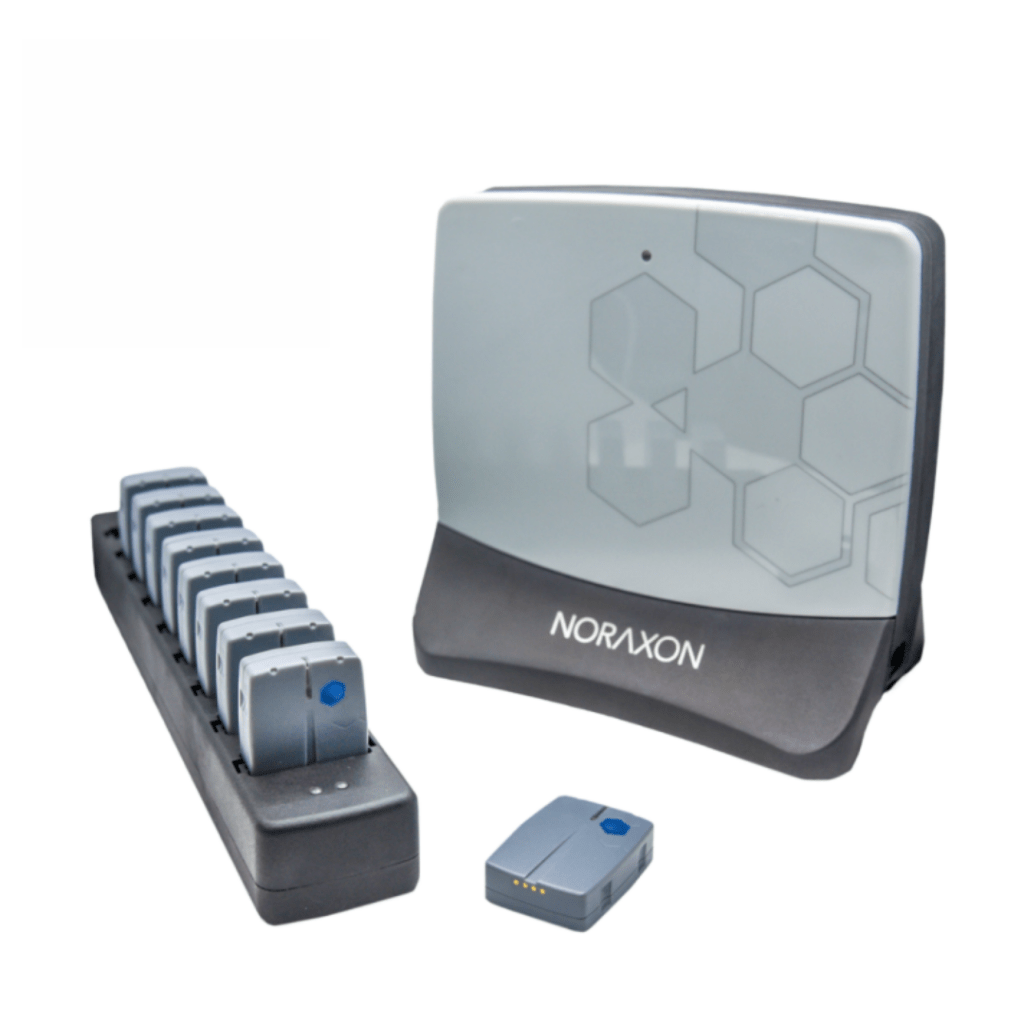
Noraxon Ultium Motion 3D Motion Capture/IMU System
The Noraxon Ulltium Motion 3D Capture System uses an array of inertial measurement units (IMUs) to measure anatomical joint angles, orientation angles, and linear acceleration in natural and lab-based environments.
h/p/cosmos gaitway 3d
The h/p/cosmos gaitway 3d treadmill system is an advanced tool designed for comprehensive motion analysis, particularly beneficial for athletes looking to improve their running mechanics.
- 3D Motion Capture: The treadmill system integrates 3D motion capture technology, allowing for real-time assessment of an athlete’s running form. This technology captures a detailed view of body movements, providing insights into stride length, joint angles, and limb positioning.
- Integrated Force Measurement: Alongside motion capture, the gaitway 3d system includes integrated force measurement capabilities. This combination allows for simultaneous analysis of kinematics and kinetics, giving athletes a complete understanding of their running mechanics.
- Real-Time Feedback: Athletes can receive immediate feedback on their performance, enabling them to adjust their technique on the fly. This real-time data is invaluable for improving efficiency, reducing injury risk, and enhancing overall performance.
- Bespoke solutions: The gaitway 3d can be configured with a range of additional parts and features to further enhance their functionality and meet specific user needs. For example, Robowalk is an advanced robotic walking aid that assists in gait training and rehabilitation promoting. Contact us directly to discover what capabilities are available.
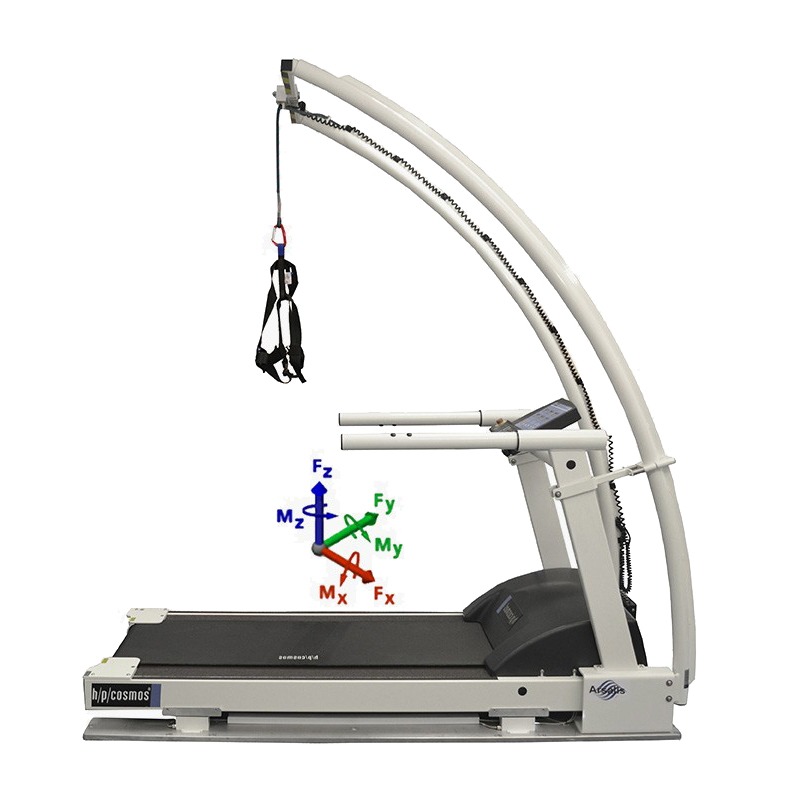
h/p/cosmos gaitway 3D Instrumented Treadmill Ergometer
The new gaitway 3D is a joint design by h/p/cosmos and Arsalis. It measures the ground reaction forces and torques in three directions and comes in three different sizes: each size is optimized for a range of speeds.
The gaitway 3D offers a rigid construction to record optimal quality signals. The functionalities include a patient weighing scale, a recording of the ground reaction forces at rates up to 10 kHz, left and right force measurement for the vertical force during walking and an extensive list of biomechanical parameters of normal and pathological gaits.
Zebris FDM
A sophisticated gait analysis tool that combines treadmill functionality with advanced plantar pressure measurement technology. This system provides comprehensive insights into foot biomechanics and gait patterns, making it a valuable addition to any gait analysis lab.
- Integrated Pressure Measurement: The Zebris FDM system features an integrated plantar pressure measurement platform built into the treadmill surface. This allows for continuous monitoring of pressure distribution across the foot during walking or running. The high-resolution sensors capture detailed data on pressure points, providing insights into areas of the foot that may be under excessive stress or load.
- Dynamic Gait Analysis: The treadmill’s dynamic environment allows for the analysis of gait patterns under conditions that closely simulate real-world walking or running scenarios. The system captures data on stride length, cadence, and gait symmetry, offering a comprehensive view of an individual’s movement mechanics.
- Real-Time Feedback and Visualisation: The Zebris FDM system provides real-time feedback and visualisation of gait parameters, enabling immediate assessment and adjustment of movement patterns. Clinicians and athletes can view graphical representations of pressure distribution and gait cycles, facilitating quick interpretation of data and informed decision-making.
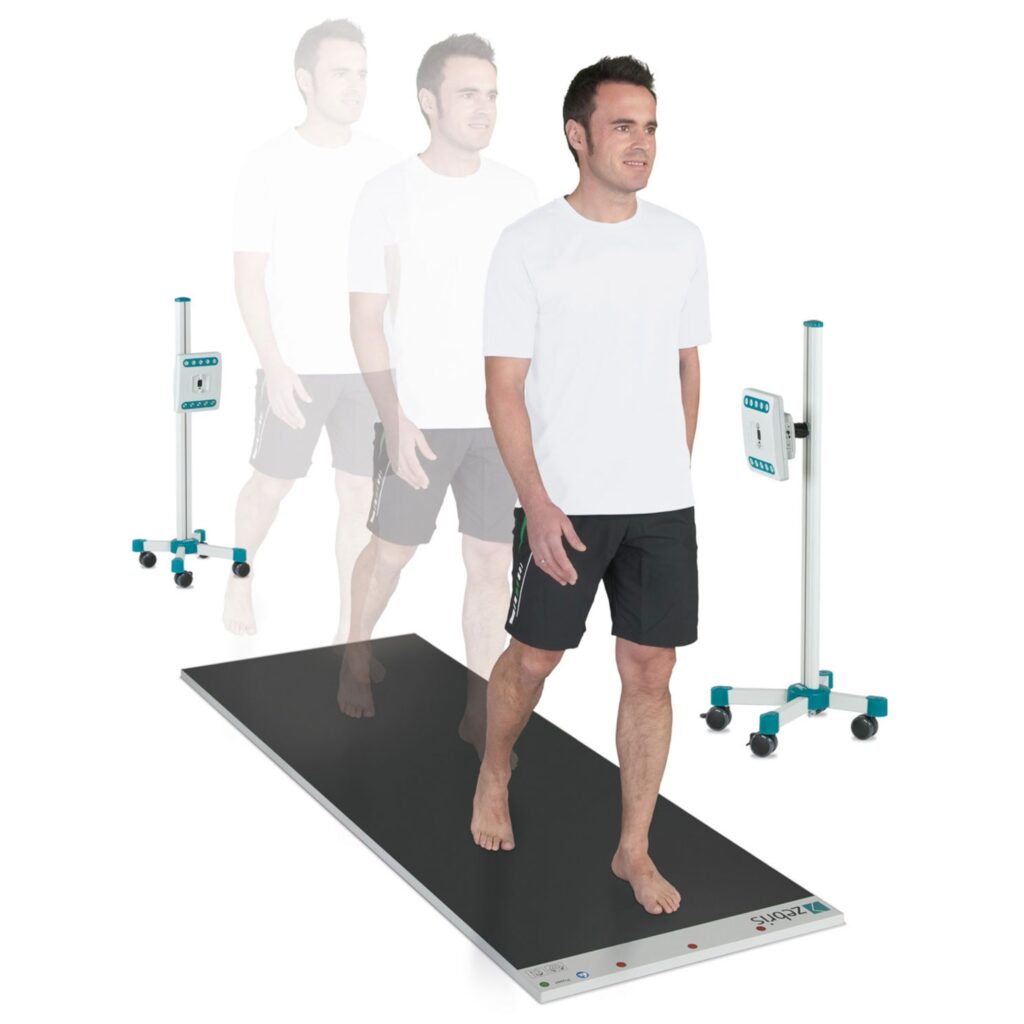
zebris FDM Stance and Gait Analysis System
The zebris FDM System analyses stationary and dynamic gait patterns using sophisticated, high-quality plates and easy-to-use accompanied analytic software. Ideal for use in both clinical settings as a diagnostic tool and as a biometric tool in research.
The zebris FDM system is ideal for both clinical and research settings, as the 11,000 sensors give a comprehensive view of both static and dynamic force distribution.
Integration with Other Technologies
The products from HaB Direct work seamlessly together to provide a comprehensive analysis. For example, integrating EMG data with force plate measurements offers a holistic view of muscle function and biomechanics, allowing for precise assessments and interventions.
Advanced Wearable and VR Technologies
Noraxon Ultium Portable Lab
The Noraxon Ultium Portable Lab is a cutting-edge wearable technology that provides a comprehensive solution for gait analysis on the go. This portable lab includes:
- Wearable EMG Sensors: These sensors capture precise muscle activity data, enabling real-time analysis of neuromuscular function.
- IMU Sensors: The IMU sensors track movement patterns with high accuracy, making it possible to assess joint angles and identify compensatory movements.
- Customisable Kits: Users can build a tailored setup that fits their specific needs, whether for sports performance, rehabilitation, or research.
The Ultium Portable Lab allows users to conduct gait analysis in various settings, from clinics to athletic fields, offering flexibility and convenience.
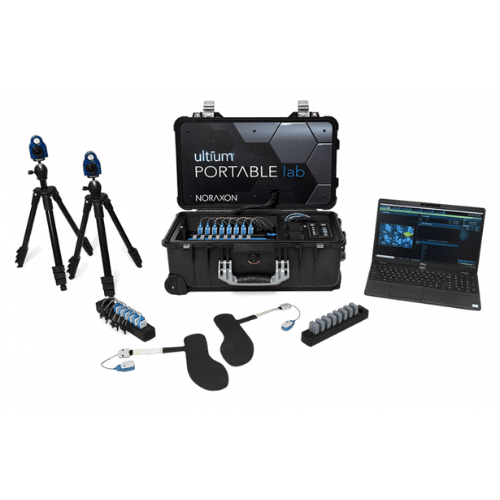
Noraxon Ultium Portable Lab
With the inclusion of Ultium Motion for reliable kinematic measurement, the Noraxon Ultium Portable Lab is now a complete biomechanics lab-in-a-case. And thanks to its modular format, you are able to build your own system for capturing high-fidelity data.
As all modules are contained in the case, obtaining biomechanics data is now possible whenever you need it, and wherever you need it. Furthermore, thanks to the modular build, you can capture yet more data when your budget allows.
Bertec Immersive Labs
Bertec’s Immersive Labs represent a breakthrough in gait analysis by incorporating virtual reality (VR) technology:
- Immersive Labs: Bertec Immersive Labs is an integrated research system for biomechanical analysis. It combines a split belt force instrumented treadmill, 3D motion capture system, and virtual reality dome. The system allows the researcher full control of the lab environment.
- Immersive Labs HMD: This new product uses a VR headset to create immersive environments that simulate real-world scenarios. Users can experience dynamic situations that challenge their balance and coordination, providing valuable insights into their movement patterns.
- Real-Time Feedback: The VR system delivers real-time feedback on performance, enabling users to make immediate adjustments to their movement techniques.
- Applications: This technology is ideal for athletes looking to enhance their performance and for rehabilitation patients needing a controlled environment to practise movements.

Bertec Immersive Lab with FIT Gen 5 Treadmill
Bertec Immersive Labs is an integrated research system for biomechanical analysis. It combines a force-instrumented split-running belt (dual belt) treadmill, a 3D motion capture system, and a virtual reality (VR) dome.
To be paired with the Bertec Treadmill Fit Gen 5.
Contact us today for your gait analysis solutions
* indicates required fields

